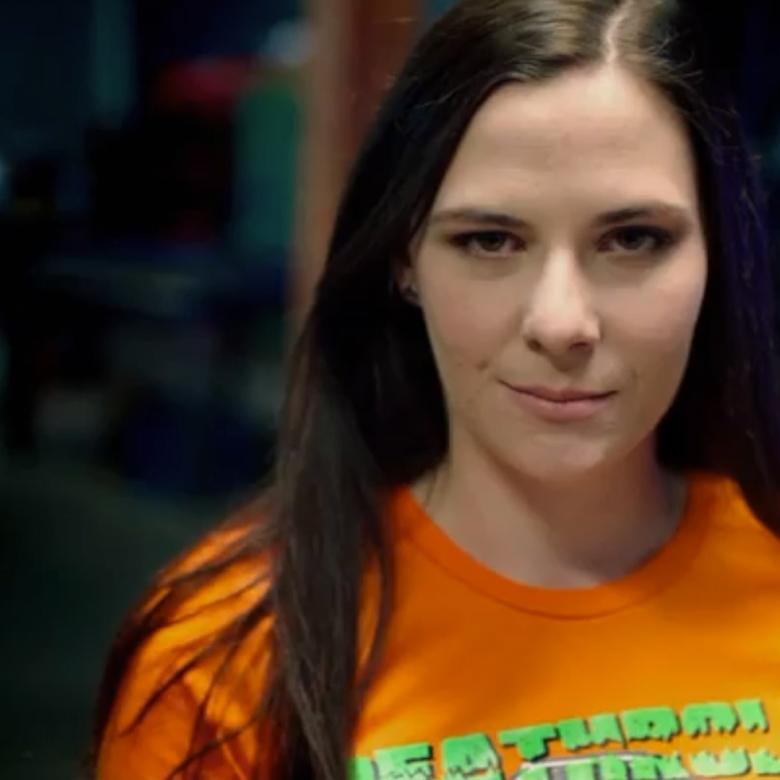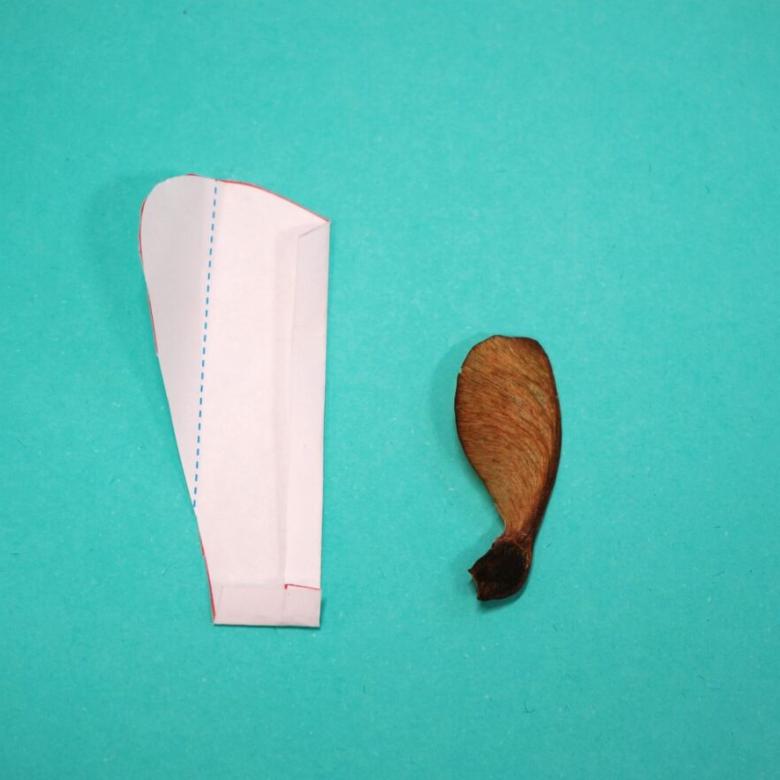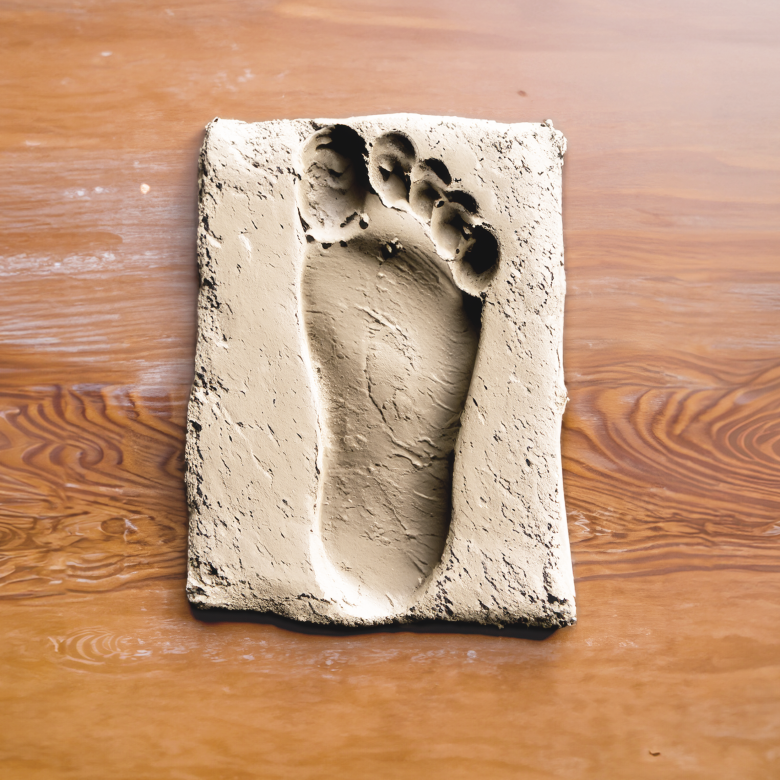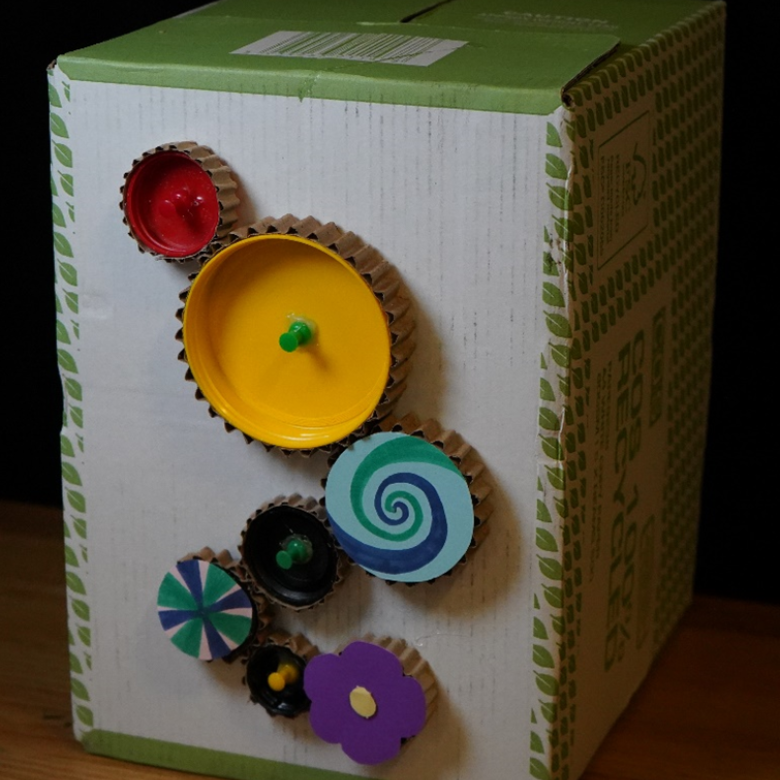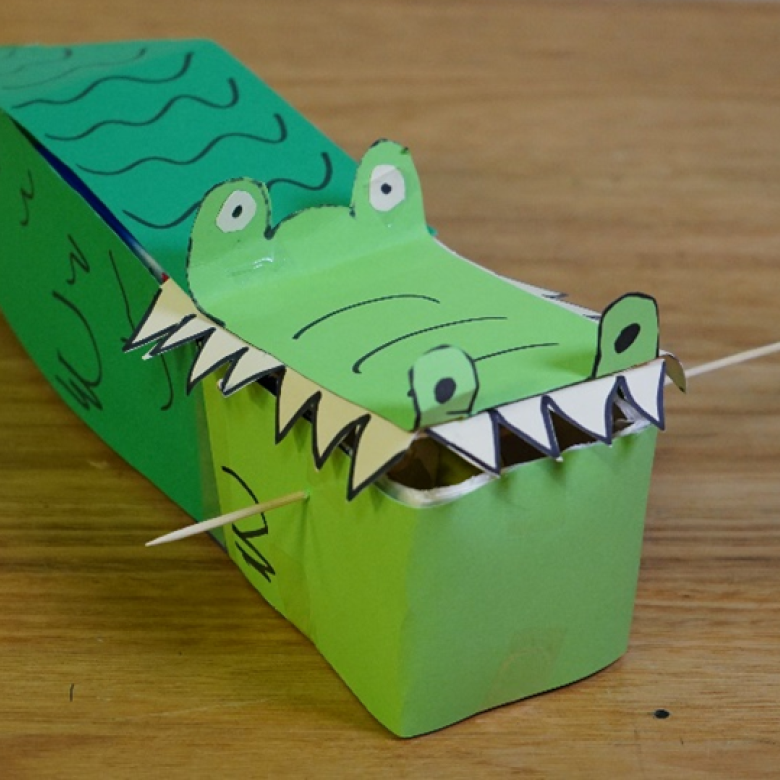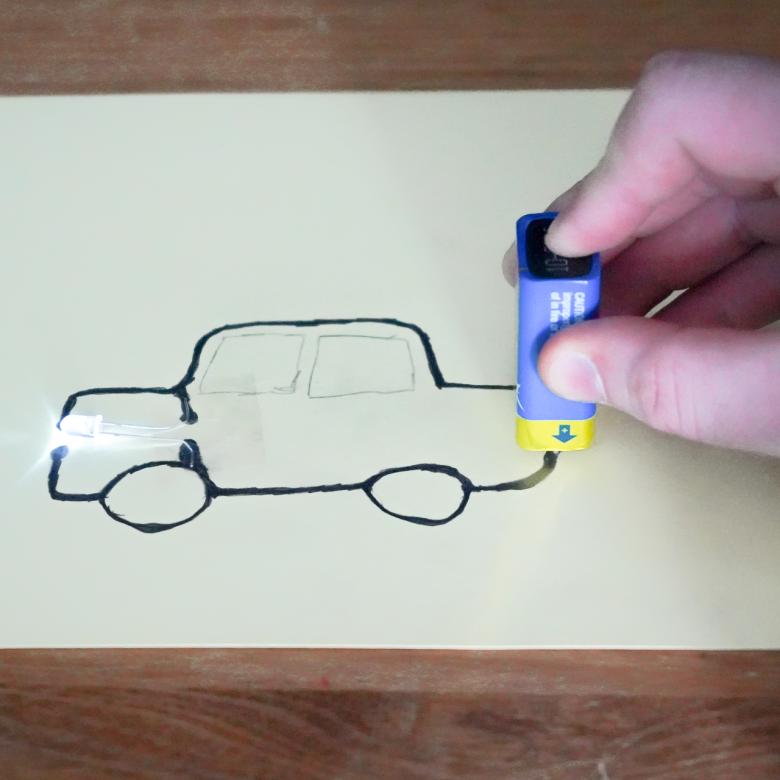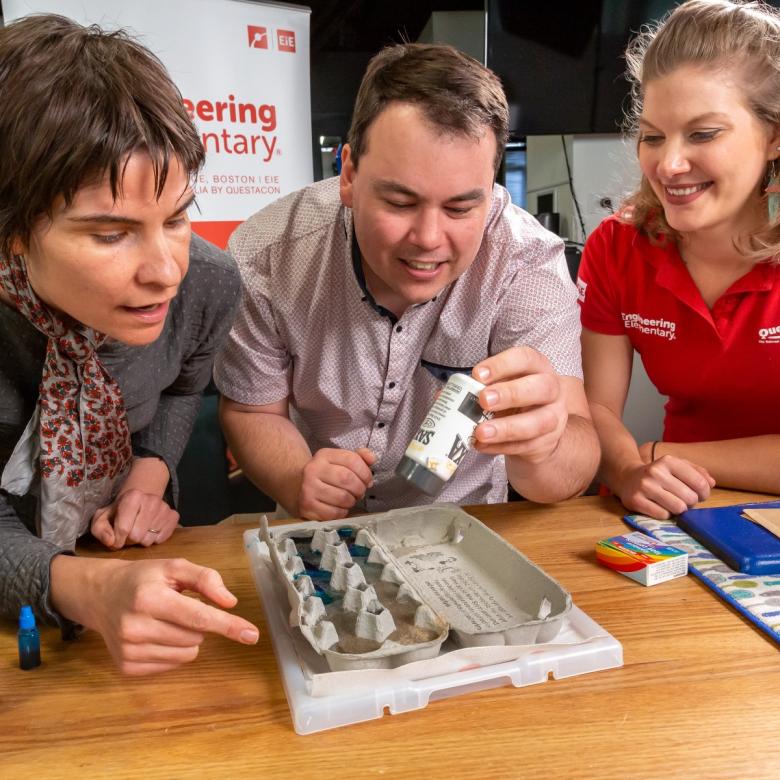How would you spend your time if you were housebound for 3 months? Would you watch movies, read books, play games or get bored? Or would you teach yourself how to build robots?
When Erica Hediger’s health got really bad, she wasn’t able to go out, but she found a way to entertain herself. Armed with only the internet and her housemate’s workshop, she YouTubed, googled and tinkered her way to creating amazing things. She spent 3 months making toys, and learning the basics of coding, programming and electronics. First, she made a sonic screwdriver that was also a TV remote, then a videogame-inspired night-light. What she didn’t expect was that this would lead to setting up her own business.
Erica’s business, The Creative Element, helps local startups and entrepreneurs to invent, prototype and design their products from scratch.
Erica’s interest in technology also led her somewhere she never expected. When she went to a combat robotics competition, she found it really interesting, but assumed she would never be able to do it herself. Then she got talking to the robotics builders and discovered that they came from many different backgrounds, from artists to designers of prosthetics.
‘If all these people with weird backgrounds can do it, then maybe it’s not as hard as I thought it was.’
Since then she became a champion in combat robotics and earned her spot as the team captain on an American TV show called BattleBots, the Olympics of combat robotics.
What’s Erica’s advice on how to get started in battle robotics?
‘There is a community in Australia that is pretty strong at the moment so you can go to some of the sporting events or just jump online and have a chat with a few of the builders. Everyone’s really really welcoming! Even if you’re not an engineer or you have no understanding of how the robots work, everyone’s […] excited to have more people competing so everyone will help you out.
Try and get some motors running around on a chopping board […] and then just go from there.’
Why it's important
Erica’s experience in teaching herself, and others, about robotics is inspiring more women to learn about technology. The Creative Element has an education program to get more women into technology fields, by teaching skills in programming, virtual reality and engineering. It also teaches them how to turn these skills into a small business.
Are you an enterprising Australian? Tell us your story. Discover more stories about Enterprising Australians.
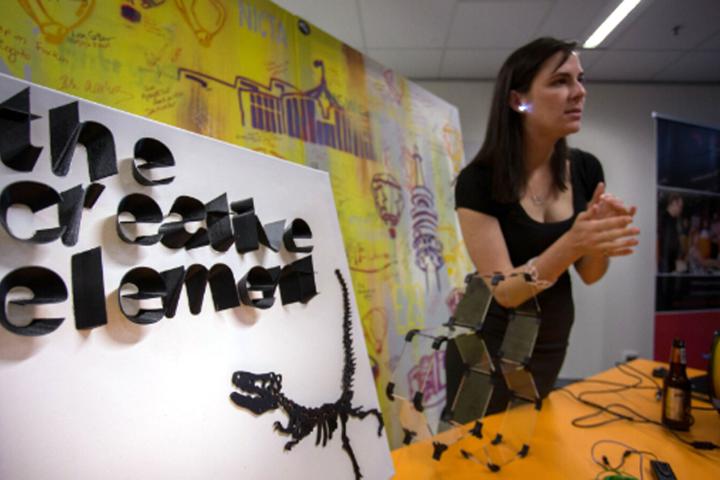
[background music playing]
[Footage of Erica standing outdoors, next to a torch with a very large flame, looking at the camera with her hands on her hips]
[The words “If you can think it” appear at the bottom of the screen, then disappear]
[The words “You can Make it” appear at the bottom of the screen, then disappear]
[Rapid series of photos, only appearing for a second, of :
- machinery and tools in Ericas workshop (none named),
- other people connecting a machine with wheels to a computer,
- a simple machine (block of wood with a motor and wheels) driving around the workshop,
- more pieces of metal being added to the machine,
- the finished machine – a large drivable robot with mottled green paint,
- Erica being interviewed in front of the finished robot,
- Erica and her BattleBots team waving to a crowd.
- Erica driving the green robot in a fight with another robot
[Erica next to the flame again, with the words “Discover more” at the bottom of the screen].
[Images switches to Enterprising Australians logo]
[background music playing]
Erica: About a year and a bit ago my health got really, really bad to the point where I had to stay indoors for about three months while my immune system calmed down.
So, during that time I was a bit like the ‘Bubble Boy’, and I couldn’t really leave the house and all I had was the internet.
[Image shows Erica sitting in her workshop talking to the camera.]
But, thankfully, I was living with a fantastic electrical engineer who had a whole workshop just full of goodies, so whilst he was at work I would YouTube how to get things to work and slowly taught myself basic programming and started building my own little toys.
[Image shifts to Erica designing in her workshop, with close-up shots of her tools and equipment.]
I made a sonic screwdriver that would change the TV channels, I made a little Zelda rupee light that I used as my nightlight, I learnt how to use the 3D printers.
So, over that 3 month period where I was really trapped in the house, I slowly taught myself the core of the skills that I use for my business now, and when I emerged I decided if I could do it in 3 months then this was something I could share and expand and teach other people to do, and help people make their own products.
Creative Element is a business that I started to help local start-ups and entrepreneurs invent and prototype and design their own products from scratch.
So, we take them through a process of manufacturing and production that includes things like 3D printing, laser cutting, more advanced manufacturing machines like injection moulders and vacuum-formers, as well as things that are just as basic like using Arduinos, soldering irons, basic LEDs.
[Image shifts to Erica tinkering with electronics in her workshop, with close-ups of her equipment.]
The biggest challenge I’ve had to overcome in setting up the business was definitely in credibility.
I don’t have a degree in software engineering and I don’t have years and years of experience as a hardware engineer, so a lot of it was convincing people to trust me, so a lot of my prototyping skills come from collaborating with other people.
[Image shows Erica designing with the help of a colleague.]
So being that I don’t have a huge background I’m a bit of a jack-of-all-trades, so I know a lot of different things but not a comprehensive amount of knowledge.
The best part of that was that I had this fantastic space that I could bring people into and instead of me just giving them a product at the end of it, they actually learn the skills with me so they could see how I was making everything and they would get something out of it as well, as opposed to just their product at the end.
[Image shows Erica sitting in her workshop talking to the camera.]
One of the main drivers behind doing the education side of The Creative Element is to get more women into tech.
[Image shows Erica working at her computer.]
It’s something I’m incredibly passionate about because it’s something that I wanted for myself when I was younger.
It’s very much male dominated still, but it is slowly changing.
There’s a bit of a misconception about having to be very ‘blokey’ and working in a workshop it has to be a bit tough and rough and tumble, but it’s actually really not like that.
[Image shows Erica placing a test tube into a robot claw.]
There’s some of the most communicative, gentle, interesting co-workers that you’ll ever come across in engineering.
[Image shows a robot rolling across a table towards the camera.]
We’re going to start running a program to educate young women on whether it’s engineering, or virtual realities, computer programming and then turning that skill into a small business.
[Image shows Erica sitting in her workshop talking to the camera.]
So, hopefully we’ll have a bunch more young female STEM entrepreneurs in the next couple of years.
[Image shifts to the Enterprising Australians logo.]
[background music playing]
Erica: [Erica sitting in her workshop, speaking to the camera]
The path to making my first robot was a really funny one, actually.
I went to my first robotics competition and I thought it was fantastic and really interesting, but I thought I’d never be able to do that myself, ‘cause robots are really complicated, right?
[Several photos flash for a second that feature various unnamed machinery and tools in Erica’s shop, plus several photos of a green metal machine].
Around Christmas time that year I got a massive box of what I thought was junk, and that was it! No instructions!
[More photos from around the workshop flash for a moment, more machinery and the large green machine, several other unidentified people start to appear in the shots, a whiteboard with plans appears for a moment].
So, from there I just started YouTubing everything and so I ended up putting it together in my shed,
[Photos of several parts of machinery being brought together and connected into one machine, electronic components such as wires being added, tyres being added]
and I rocked up a few days beforehand and the local competitors actually gave me a hand putting the electronics together the last few steps
[Many different people in the workshop, finalising a BattleBot – the large green machine we saw at the start.]
[Switches to footage of Erica speaking]
and I competed with a wooden wedge that got absolutely destroyed
[Switches to footage of an arena with large plexiglass walls. The crowd outside the arena is watching two robots – a large black wedge-shaped robot with red and white decorations drives into a large circular saw wheel, and appears to get cut by the saw]
in about 10 seconds in my third match. But, yeah, I made my first robot out of scrap wood and old cordless drills and a chopping board.
[Shot of Erica in her orange BattleBot team shirt]
I actually got to be, really luckily, the team captain for ‘BattleBots’,
[Photo of the finished BattleBot we saw being made in previous footage – It now has green paint in multiple mottled shades, a large red disc in the centre and spikes on the front.]
a TV show over in America which is a bit like the Olympics of combat robotics.
[Footage of Erica being interviewed on TV next to the green BattleBot].
So, I get to spend a couple of weeks over there
[Footage of Adam Savage being interviewed for BattleBots]
with a massive 150kg super heavy weight robot called Death Roll.
[Footage of Erica and her teammates waving next to the BattleBot arena].
[Switches to footage or Erica remotely controlling Death Roll].
The best way to start in combat robotics is definitely to just try and get some motors running around
[Footage of Death Roll battling another BattleBot, a large white spinning disc].
on a chopping board, and see if that can work, and then just go from there. There’s a community in Australia that’s pretty strong at the moment, just jump online and have a chat to a few of the builders.
[Footage of Erica speaking to the camera].
Everyone’s really, really welcoming and even if you’re not an engineer or you have no understanding of how the robots work, everyone’s really, really excited to have more people competing, so everyone will help you out.
[Image shifts to Enterprising Australians logo].

